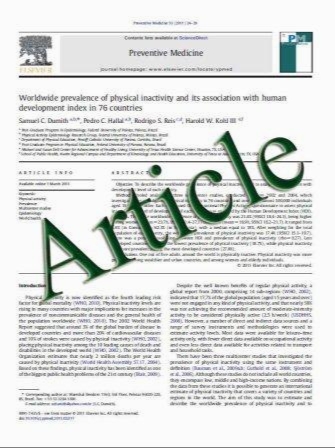Glucocorticoid enhances hypoxia- and/or transforming growth factor-b-induced plasminogen activator inhibitor-1 production in human proximal renal tubular cells
- نوع فایل : کتاب
- زبان : انگلیسی
- مؤلف : Hideki Kimura Xuan Li Kunio Torii Toshiharu Okada Kazuko Kamiyama Daisuke Mikami Kenji Kasuno Naoki Takahashi Haruyoshi Yoshida
- چاپ و سال / کشور: 2011
Description
Background Glucocorticoid (GC) treatment reportedly exaggerates renal fibrosis in progressive kidney diseases during which hypoxia occurs as an unavoidable consequence in renal tubular cells. Two major fibrotic factors, hypoxia and transforming growth factor-b (TGF-b), upregulate the production of plasminogen activator inhibitor- 1 (PAI-1), a fibrosis enhancer. Most recently, we reported that GC increases PAI-1 production in human proximal tubular epithelial cells (HPTEC). However, the detailed interactions that occur between these PAI-1 inducers in HPTEC remain to be clarified. Methods Confluent HPTECs were treated with GC and/or TGF-b for 24 h under normoxia or hypoxia. The mRNA and protein amounts of PAI-1 and GC receptor (GR) were determined by TaqMan quantitative PCR and immunoassays, respectively. GC and hypoxia response element (GRE and HRE) activities were measured by transient transfection of GRE- and HRE-luciferase expression vector. Results Hypoxia had no influence on dexamethasone (DXA)-enhanced GRE activity, as DXA had no influence on hypoxia-enhanced HRE activity. Hypoxia induced PAI-1 expression. TGF-b increased basal and hypoxiastimulated PAI-1 production. Hydrocortisone (HC) and DXA increased hypoxia- or TGF-b-stimulated production of PAI-1 mRNA and protein. Moreover, DXA enhanced hypoxia plus TGF-b-stimulated PAI-1 production. The PAI-1-increasing effect of HC under hypoxia was abolished completely by RU-486, a specific inhibitor of the GR, and largely by PP2, a specific inhibitor of the Src family of protein tyrosine kinases. Conclusion Glucocorticoid induces hypoxia- and hypoxia plus TGF-b-stimulated PAI-1 production via the GR and tyrosine kinase pathways. These actions of GC may partially explain the renal fibrotic changes seen in progressive inflammatory kidney diseases during GC treatment.
Clin Exp Nephrol (2011) 15:34–40 Received: 8 May 2010 / Accepted: 8 September 2010 / Published online: 3 November 2010 Japanese Society of Nephrology 2010


